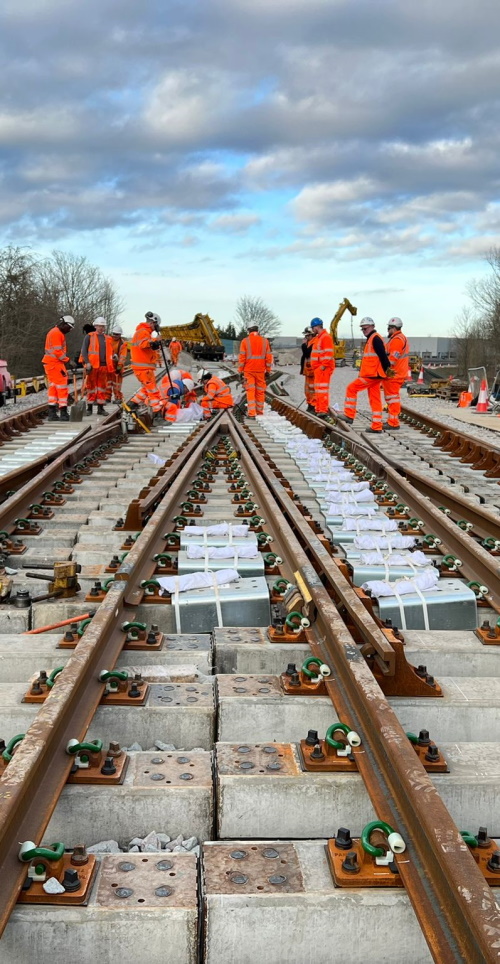The assessment to be presented in the ES will consider impacts from the use of resource materials such as steel, aggregates and minerals, concrete, wood, plastic, and manufactured construction products. It will also consider impacts and management of waste generation from the project.
The project would require large quantities of raw materials for the construction of tracks, railway station buildings, new level crossings, bridges, roads, viaducts, signalling system, signage, lighting, drainage, communications infrastructure, lineside equipment, overhead power cable and landscaping works. Raw materials include aggregates and minerals from primary, secondary and recycled sources.
Potential impacts associated with the project include:
- The availability of materials and the subsequent effect on the demand for materials due to the consumption of raw resources.
- Depletion of non-renewable resources.
- Potential sterilisation or depletion of mineral safeguarding areas.
- Emissions associated with the transportation of materials to site.
The project would also require certain materials for ongoing operation and maintenance.
Taking account of both the construction of the project and its operation, the assessment will also focus on the generation and management of waste products, considering the capacity of landfills and other waste management and re-cycling infrastructure.
The project would prioritise sustainable materials use and waste management. For example, it would look to balance the amount of earthwork material it produces in excess (from tunnels and cuttings) with the material demands for embankments and earthwork mitigation (the cut and fill balance). Other sustainable practices would relate to the selection and management of materials, protection of land and soil, and active monitoring of materials requirements.
During construction, waste would largely derive from site preparation works, including green waste from vegetation clearance, inert waste from demolition and site preparation, surplus excavated materials (including contaminated ground or ground which needs to be treated before it can be reused), and non-hazardous materials such as timber, tarmac and signage.
Potential impacts associated with the project during construction include:
- The ability of waste infrastructure within the region to continue to accommodate waste from other sources and the reduction in regional landfill capacity.
- Potential temporary adverse effect on the ability of waste infrastructure within the region to continue to accommodate waste from other sources.
- Emissions associated with the transport and management of wastes that will require disposal off-site.
During the operation of the project, waste would be generated from general maintenance works as well as municipal solid waste from increased passenger use. Landfills and other waste management infrastructure would need to have sufficient capacity to accommodate waste from the project. The potential impacts from the generation and management of waste would include reduction in the UK’s landfill capacity.

